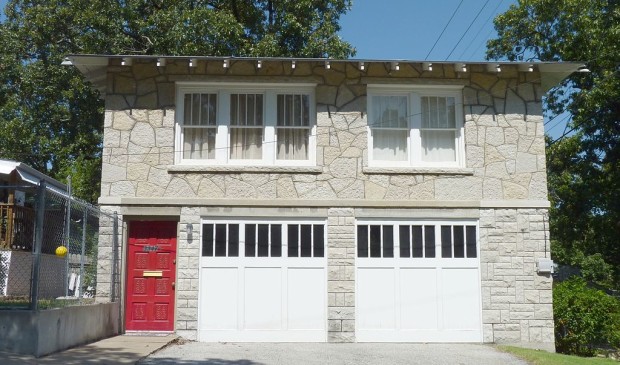Council loosens rules on accessory dwelling units
Friday, November 20, 2015 by
Tyler Whitson Austin homeowners hoping to build accessory dwelling units on their properties now have a better chance of being able to do so, based on new rules that City Council passed on Thursday.
The measure reducing restrictions on accessory dwelling units, or ADUs, in the Land Development Code passed on a 7-4 vote. Mayor Pro Tem Kathie Tovo and Council Members Ora Houston, Ann Kitchen and Leslie Pool cast the dissenting votes.
“We need a wide range of housing types to be made available, and we need more of them,” said Mayor Steve Adler.
Houston said she opposed the measure because she was worried that it might have the opposite effect of its intention, which is to increase the amount of affordable housing in the city.
“I, too, have to speak on behalf of those people who are just about being priced out by some of the zoning and development regulations that the city has imposed upon parts of my community that we will never be able to take back,” said Houston. “Once this genie’s out of the bottle, we can’t fix it.”
Kitchen said she preferred taking a stronger look at the regulations in CodeNEXT, an ongoing revision of the city’s Land Development Code that should be ready for adoption in 2016, and that she did not want to supersede neighborhood plans.
Pool raised concerns about the impact that infill development could have on the drainage system by encouraging property owners to build more impervious cover through which rainwater cannot penetrate. The new rules do not change impervious cover regulations.
Council Member Greg Casar, who helped lead the effort to change ADU regulations, responded to some of these concerns in an interview after the vote.
“Our fair housing study commissioned by the city identified restrictions on accessory dwelling units as a barrier to fair housing,” Casar said. “For progressives, that’s a really big sell for allowing accessory dwelling units, that you can have different people of different economic means getting the chance to enjoy our greatest neighborhoods.”
Casar said he is also in favor of less impervious cover in the city but that city staff expects it to continue to increase regardless of any action on ADUs. “The question is, can we, with the limited impervious cover that we have, house more people? Or do we want the impervious cover that we have to be really big houses that house very few people?” he asked.
Advocacy group AURA commended Council’s action in a press release. “This is an important step toward allowing more abundant housing in the city of Austin. I’m hopeful that by allowing more housing options within reach of people with modest incomes, we can begin the process of making Austin neighborhoods more integrated and diverse,” said member Cory Brown.
Mary Ingle, president of the Austin Neighborhoods Council, said that Council “violated public trust” in adopting the ordinance and that she much preferred an earlier proposal that the Planning Commission issued after a lengthy stakeholder process in which she was involved.
“We made concessions, and we don’t even get to try those out – we have to do something completely different,” Ingle said.
Planning and Zoning Department Director Greg Guernsey explained how the amendments to the city’s Land Development Code make it easier to build ADUs.
“Removing restrictions like having a second driveway or allowing the buildings to be closer … even just locating the entrance – that was a bit onerous for some because you have to move the door over to one side – all those things help to make it easier. The parking reduction that we have, just going to one or none (in some areas) would make it easier,” Guernsey explained.
The ordinance also reduces the minimum lot size requirement for building two residences on one property in certain zoning categories from 7,000 square feet to the standard lot size – which is 5,750 square feet – and put a 1,100-square-foot cap on the size of an accessory dwelling unit.
Regarding parking requirements, eligible property owners now have to construct only one off-street parking spot for an ADU – rather than two – and can forego building one at all if the property is within a quarter-mile of an “activity corridor,” as defined in the Imagine Austin Comprehensive Plan, that is on a bus or transit route.
In addition, the ordinance prohibits property owners from using ADUs as Type 2, non-owner-occupied short-term rentals and limits the amount of time that they can be used as Type 1, owner-occupied short-term rentals to 30 days in a calendar year.
Council also considered allowing ADUs to be built in an additional zoning category, which the city refers to as SF-2, but ultimately opted to support a measure, proposed by Adler with input from Casar, that does not include the change.
Adler said that, based on his research, there are 62,280 lots in the SF-2 category that are 5,750 square feet or larger, meaning that they would have been eligible for ADUs based on their size had they been included in the ordinance.
SF-3, another zoning category that is more prevalent in the central city and is included in the ordinance, has about 8,900 lots that fall between 5,750 square feet and 7,000 square feet, meaning that they will be eligible for ADUs based on lot size when the new rules go into effect.
All of these regulations will likely be revisited as part of the CodeNEXT process, as noted in an amendment, proposed by Kitchen, that Council incorporated into the ordinance.
Photo by AbeEzekowitz (Own work) [CC BY-SA 3.0], via Wikimedia Commons.
You're a community leader
And we’re honored you look to us for serious, in-depth news. You know a strong community needs local and dedicated watchdog reporting. We’re here for you and that won’t change. Now will you take the powerful next step and support our nonprofit news organization?









